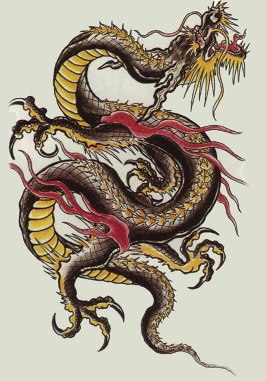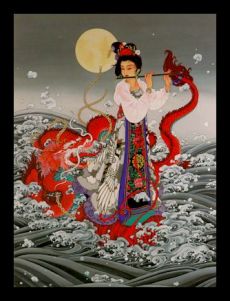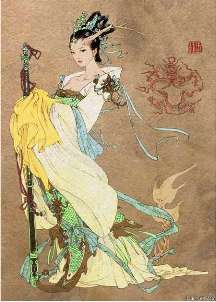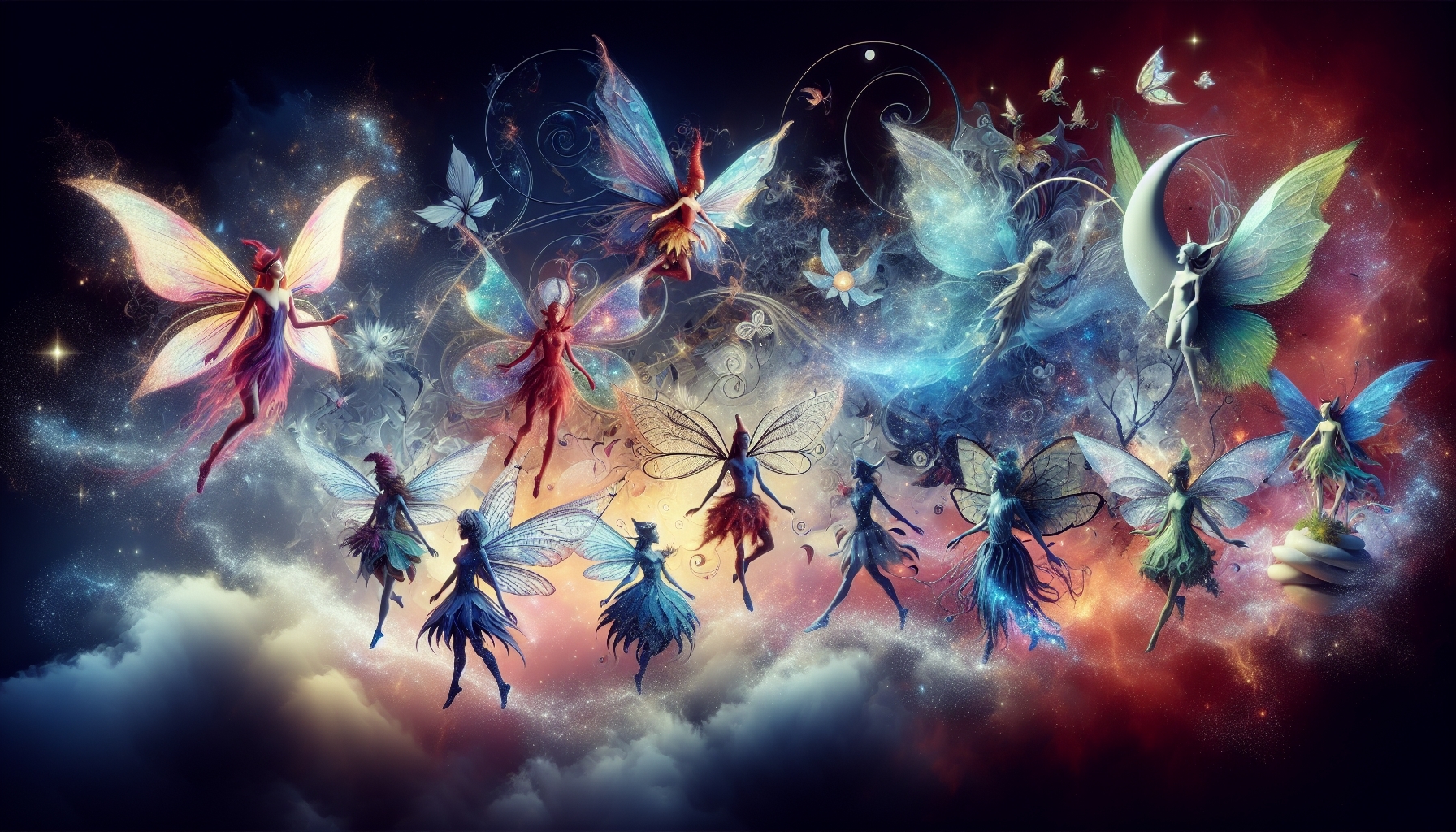Chinese Dragon Art

Chinese Dragon Art dates back to at least 4000 BC. Did dragons really ever exist as depicted in this early art? China’s history books have recorded many eyewitness accounts about the appearance of dragons, which makes it enticing to re-examine whether dragons truly did exist. Sorry to say, we can not examine that topic on this page.
Chinese Dragon Art and the Dragon itself, is an important spiritual symbol in Chinese Culture. It shows up in all parts of Chinese culture both today and in ancient China. The Chinese dragon has become a strong spiritual symbol for the Chinese people.
In Chinese mythology, they are associated with pagan religions and said to posses very strong magical abilities. These are magical powers that allowed them to control a lot of what we consider Mother Nature's Domain, rainfall, drought, storms and other things. They were believed to be well meaning and bringers of good luck.
Because of this reverence and the power of the dragon images, the Chinese dragon became a symbol of the Chinese Emperor.
The Chinese dragon images are revered and worshiped and displayed on many different art objects. This reverence of the Chinese dragon images dates back to 618AD.
Samples of Chinese Dragon Art

The "The Dragon King's Daughter" painting is of the heroine in a story that dates back to the Tang dynasty (A.D. 618-907). The story was repeated many times across Ancient China.
"The Dragon King's Daughter" is a tale that has indeed been passed down through generations in Chinese culture, with the story originating during the Tang dynasty (A.D. 618-907). While there may not be a specific painting titled "The Dragon King's Daughter," it's possible that various artists have created their own interpretations of this character or scenes from the story over time.
The story revolves around the daughter of the Dragon King, a mythical creature in Chinese folklore who has dominion over water and weather. The tale typically involves the Dragon King's daughter falling in love with a mortal man, sometimes a scholar or fisherman. Their love story often encounters challenges and trials, as they navigate the differences between their worlds and face the disapproval of the Dragon King or other forces.
It is the story of how a human man named Liu Yi rescued the daughter of the Dragon King that lived deep inside Dong Ting Lake. The young man married the King's beautiful daughter and was rewarded with many riches and immortality.
As a cherished part of Chinese mythology and folklore, the story of the Dragon King's Daughter has been depicted in various forms of art, literature, and drama throughout history. It has likely inspired many paintings, sculptures, and other artistic expressions, reflecting the rich cultural heritage of China.

This a painting of Nuwa the Goddess. As you can see from the painting, she appears to be a beautiful woman. What is a little more difficult to see, is the fact that from the waist down she is half dragon.
The myth tells us that Nuwa lived not long after the world was formed by P'an Kun. To form this world he split the egg of chaos into Yin and Yang and grew the sky and earth taking about 18,000 years.
The painting you're describing features the Chinese goddess Nuwa, a central figure in Chinese mythology. Nuwa is often depicted as having the upper body of a beautiful woman and the lower body of a dragon or serpent.
According to Chinese mythology, Nuwa and her brother Fuxi were among the first intelligent beings on Earth. They are sometimes considered siblings, while in other versions of the myth, they are husband and wife. Both Nuwa and Fuxi are credited with playing significant roles in the creation and development of humanity.
Nuwa is known for her creativity and compassion. In the myth, she created humans from clay or mud, giving life to the first people. When Heaven and Earth were separated, Nuwa felt lonely and decided to create beings to keep her company. She shaped the first humans out of clay, breathed life into them, and they became living creatures. Over time, Nuwa became the mother figure of humanity, symbolizing fertility and creation.
In addition to creating humans, Nuwa is also known for repairing the sky. According to the myth, a great battle between gods led to the collapse of the sky's pillars, causing chaos and destruction on Earth. To save the world, Nuwa patched the broken sky with five-colored stones, restored the four celestial pillars, and drove away the threat of floods by cutting off the head of a giant turtle and using its legs as support. This act of mending the sky is symbolic of restoring balance and harmony to the world.
Nuwa's story is an essential part of Chinese mythology and has been depicted in various forms of art, literature, and drama throughout history. Her image as a half-human, half-dragon goddess embodies the connection between humanity and the divine, as well as the balance between Yin and Yang.

